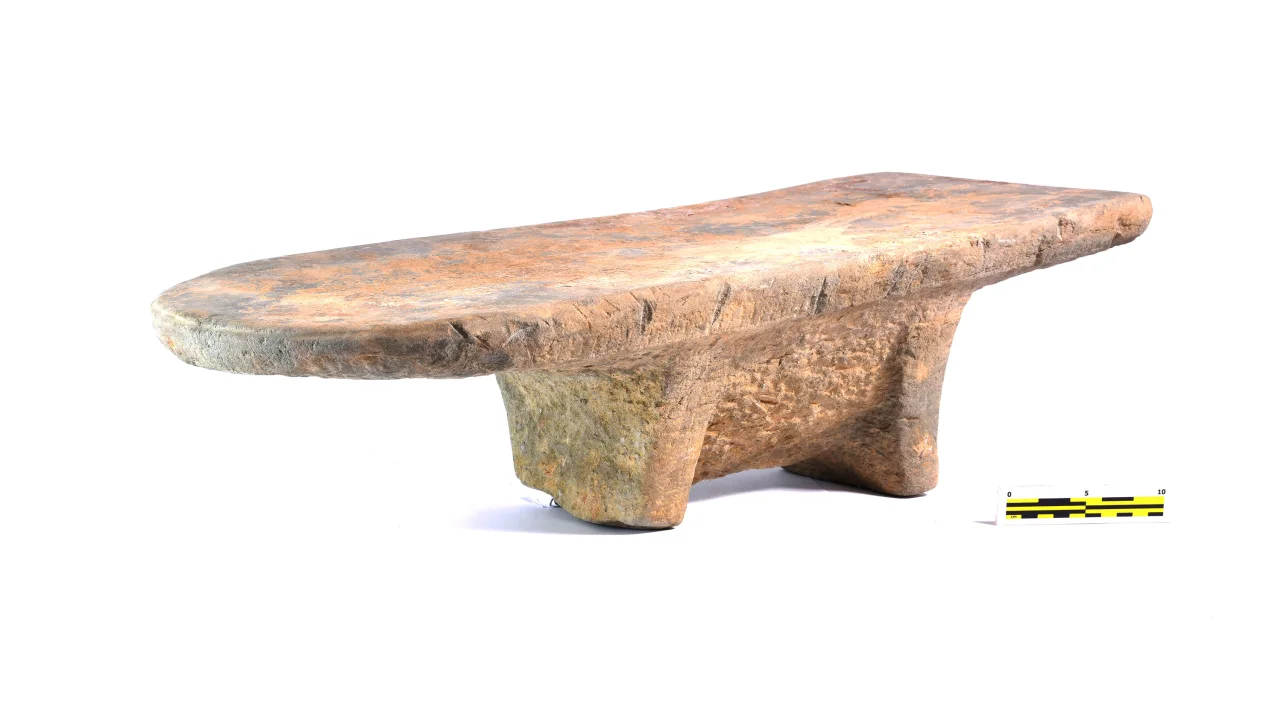A recent study conducted on stone tools unearthed in Vietnam has shed light on the ancient culinary practices in the region.
Traces of spices discovered on a grinding slab and other stone tools indicate that curry was consumed in this area over 2,000 years ago.
The sandstone slab, recovered from the Oc Eo archaeological complex in southern Vietnam, was buried at a depth of 2 meters (6.5 feet) below the surface.
This site, which was once a thriving overseas trading center of the ancient Southeast Asian kingdom called Funan, has provided valuable insights into the historical dietary habits and cultural exchanges of the region.
“Preparing curry involves not only a diverse range of spices but also the use of grinding tools, considerable time, and human effort,” said study author Dr. Hsiao-chun Hung, a senior research fellow in the department of archaeology and natural history at Australian National University in Canberra.
“Remarkably, even individuals residing outside of India nearly 2,000 years ago expressed a strong desire to savor the flavors of curry, as evidenced by their diligent preparations,” Hung said.

Analyzing ancient curry
The ingredients the researchers identified are similar to those in curries eaten in Vietnam and other places in Southeast Asia today.
“Nowadays, preparing curry in Vietnam has become much simpler for most families due to the widespread availability of curry powder in supermarkets. However, it is interesting to note that the curry recipe used today has not deviated significantly from the ancient Oc Eo period,” said study coauthor Dr. Khanh Trung Kien Nguyen, an archaeologist at the Center for Archaeology, Southern Institute of Social Sciences in Ho Chi Minh City, Vietnam.
According to Nguyen, the research team is enthusiastic about recreating the ancient curry, utilizing the ingredients discovered at the 2,000-year-old site.
The study further highlights that curry consumption dates back around 4,000 years in India, evident from the presence of turmeric, ginger, eggplant, and mango in cooking pots and dental plaque. However, the recent findings from Oc Eo reveal a rich and captivating history of curry production beyond India’s borders.
Hung emphasized that this discovery showcases the long and fascinating journey of curry, not confined solely to India but spreading its influence to Southeast Asia as well.
The ingredients unearthed at Oc Eo, like turmeric, share similarities with Indian curries, while other components, such as coconut milk and galangal, distinctly reflect the culinary preferences of Southeast Asia, making the ancient curry a delightful blend of diverse flavors and cultural influences.
How curry linked cultures
According to Hung, the exact individuals responsible for making curry at the site remain uncertain, but they are believed to have been either migrants from India or local inhabitants in Vietnam influenced by South Asian culture. The discovery of the large grinding stone, measuring 76 centimeters (30 inches) in length and 31 centimeters (12 inches) in width, alongside the remains of stilt houses, suggests that these people may have lived in close proximity to or above water.
Previous DNA analysis of a cemetery in Cambodia, connected to Oc Eo through an ancient canal system, has indicated population movement from South Asia into Southeast Asia during the first to third centuries, providing further evidence of cultural exchange and migration in the region.
The new study concluded that curry recipes arrived in Southeast Asia with South Asian traders and migrants as contact between the regions increased during the early centuries of the first millennium, and it showed how the global spice trade has linked cultures and economic systems.
Most surprising, Hung said, was that some of the nutmeg seeds unearthed during the dig still released a unique aroma.
“Food culture is significant in human history,” Hung added. “When we enjoy delicious food, we often wonder about how its flavors were formed, the origins of the recipes, and when these culinary methods were first practiced.”
The research published in the journal Science Advances on Friday.

